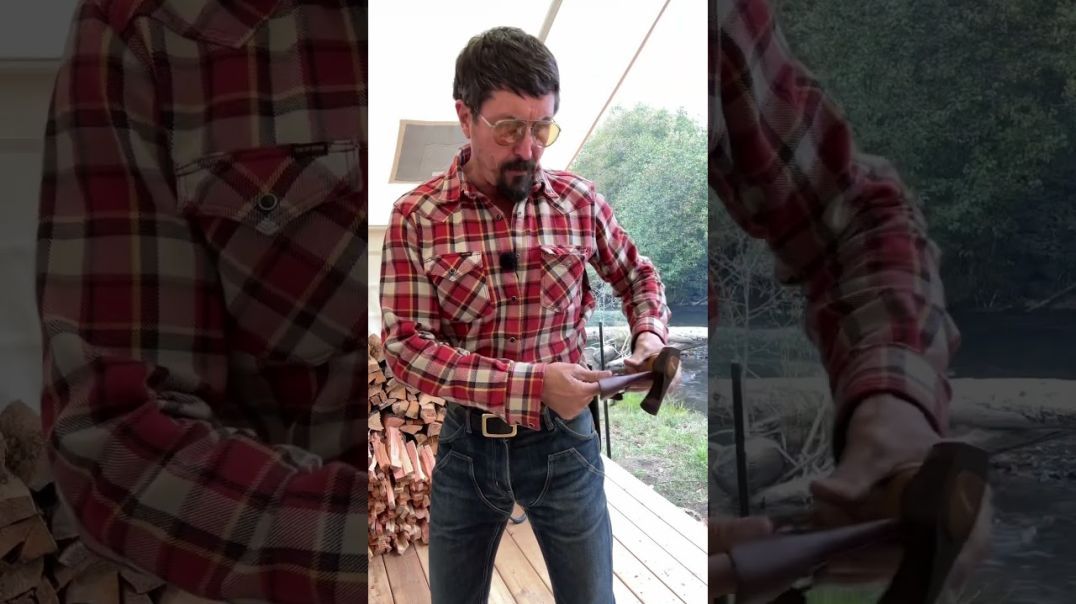Dear Creators, we are proud to announce an amazing affiliate program for you to earn some serious and continual cash. Read about our affiliate progarm here.
Caros criadores, temos o orgulho de anunciar um incrível programa de afiliados para vocês ganharem muito dinheiro de forma contínua. Leia sobre nosso programa de afiliados aqui.
HAND FILE HACKS
HAND FILE HACKS
Hi!
This is Kodo with Kodoan. You can find out more about me at
kodoan.com.
That’s
K O D O A N DOT COM.
Files
don’t get a lot of coverage in woodworking but they are quite
useful – especially for dialing in joints and inlays. I use hand
files on a daily basis for making specialty woodworking products such
as these Japanese Shakuhachi flutes.
Sharp,
accurate hand files are a necessity for getting the blowing edge
(called utaguchi) perfectly flat and for creating the dove tail like
inlay you see here. This particular style is called Kinko ryu.
Here
are my three most used files that are many years old (I’d say about
ten years old or maybe older) and yet, they don’t show signs of
needing being replaced anytime soon.
The
biggest reason is the sheaths that protect the “teeth” of the
files. Even though these files are used on seasoned bamboo, hardwood
and other things like buffalo horn, ivory and silver, they still have
years of life left as long as they go back into their sheaths after
use.
I
cringe every time I see a woodworker (or metal worker for that
matter) reach into a bucket, a toolbox or a drawer and rummage around
before pulling out a battered file with dull, rolled teeth covered in
dings. I mean, I GUESS they MIGHT work but it’s doubtful you’re
gonna get much accuracy with them. I’d rather use a file that’s
sharp with accurate edges. A sheath ensures your hand file will do
what you ask, when you ask it – efficiently and accurately.
Just
as important as a sheath is a good handle. A good handle is
enjoyable to look at AND to pick up. It creates a seamless interface
between the user and the tool. It allows you to put your
concentration where it should be – on what you are doing –
instead of focusing on maintaining a hold on your tool. A
good handle is one that fits YOUR hand – not anyone else’s.
For this reason, good quality hand files are usually purchased
without a handle. The assumption is that this is for someone that
knows what they’re doing and only they can make the best handle for
them.
A
bad handle, or worse, no handle at all, forces
you to maintain a white knuckle “death grip” on the end of your
hand file which quickly leads to fatigue, cramping and loss of
concentration and accuracy in your work. THIS is the environment in
which mistakes are easily made. At the least, it will lead to the
marring or
damage of
your work. At it’s worst, it will lead to the
marring or
damage of
you!
For
custom made handles, you
can go old school and just use a green branch from a tree in your
back yard like this one with a piece of copper plumbing pipe as a
ferrule. This one took me all of about 5 minutes to make and is
actually my favorite both in looks and function. I simply drilled a
hole in the end
and carefully tamped in the tang. No glue or epoxy was needed
because, as the green branch dries, it shrinks down onto the tang and
locks it in place. This technique is hundreds of years old and still
a great option
today.
Even after years of use, this handle shows no sign of coming loose
anytime soon.
The
sheath for it is just some doug fir from the scrap bin. I
hastily carved out a
channel in one
piece, gave the
two pieces a
quick glue up and then
rounded
the outside.
It’s all
I’ll ever need
to keep this
hand file in good working condition for years and years.
This
handle was a small piece of maple from the scrap bin turned on my
lathe. My inspiration for it was that I had seen someone drill into
an old golf ball and glue in the tang of a rat tail file. I turned
this to be a little more ergonomic and, when it’s in my hand, it
feels almost surgically attached. I can completely forget about
holding it while I focus on what I’m using it for – which is
usually clearing out the inner bamboo nodes (called “fushi” in
Japanese) when I’m making Shakuhachi. The sheath is a piece of
scrap bamboo that fits this round file so well that, when it’s put
on, it won’t fall off at all.
This
smaller file is a triangular file that I use
for creating the dove tail like inlay the mouth piece of the
Shakuhachi that I make. It was about twice this length – which was
too long. It was difficult to be accurate with my inlays with such a
long file so I snapped it in half and cold ground the end smooth.
Now, it does exactly what I ask it to do.
The
handle was another piece of that branch that had dried out. I rough
turned it on my lathe and drilled a hole in the end like the other
one. I didn’t even bother with a ferrule on this one. Years later
and….so far so good!
The
sheath is another piece of bamboo. This one is quite thick –
unusually thick for bamboo. It fits nicely and keeps it
well protected.
So,
to sum it up, if you want to get the most out of your files, I
suggest making a custom handle that fits YOUR hand. It can be as
easy as a branch off of a tree or a lathe turned piece of hardwood.
In
addition to a handle, make a sheath to keep your file sharp for
accuracy and longevity.
It
has been said that the meaning of life is to learn and then share.
In
classical martial arts, the Masters say, “no matter where you
start, strive to always get better”.
I
hope this video helps you on your path.





![7 High Testosterone Hacks [12/33] Steps to Sexual Sovereignty](https://cdn.mgtow.tv/upload/photos/2023/10/433b7634cb0d9c700a10417647f0d0e08b61a1831r2SFaC9aoqziGiqgpeE.video_thumb_4723_1.jpeg)












![Ep 3168b - [DS] Just Played Their Hand, You Are Witnessing The Destruction Of The Old Guard](https://cdn.mgtow.tv/upload/photos/2023/09/608d891b101d0ebbe021453d0c59d326ed836f3cQAhEElKaK3YcRertRfwR.video_thumb_7629_1.jpeg)




SORT BY-
Top Comments
-
Latest comments
4 years ago
A quick down and dirty way to make a good file handle is to drill a hole in a golf ball and hammer the tang into the ball. he mentions it in this video and I can tell you this method works great for a good handle
4 years ago
4 years ago
As an Engineer I class good quality files as essential tools. Being used on wood and/or bone your files will probably outlast you.
For your inlay work have you considered riffles? They are mostly used for final hand finishing of moulds, or were before CNC and LASER polishing.
BTW a triangular file should be called a three-square as they are usually used for filing the corners of a square hole square, also I think the name sounds better.
4 years ago
4 years ago
4 years ago